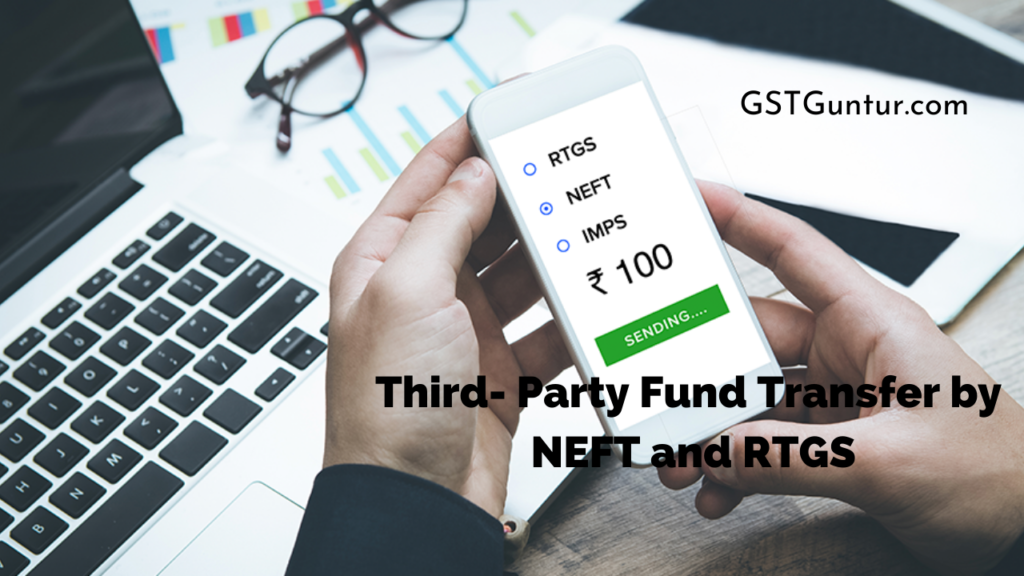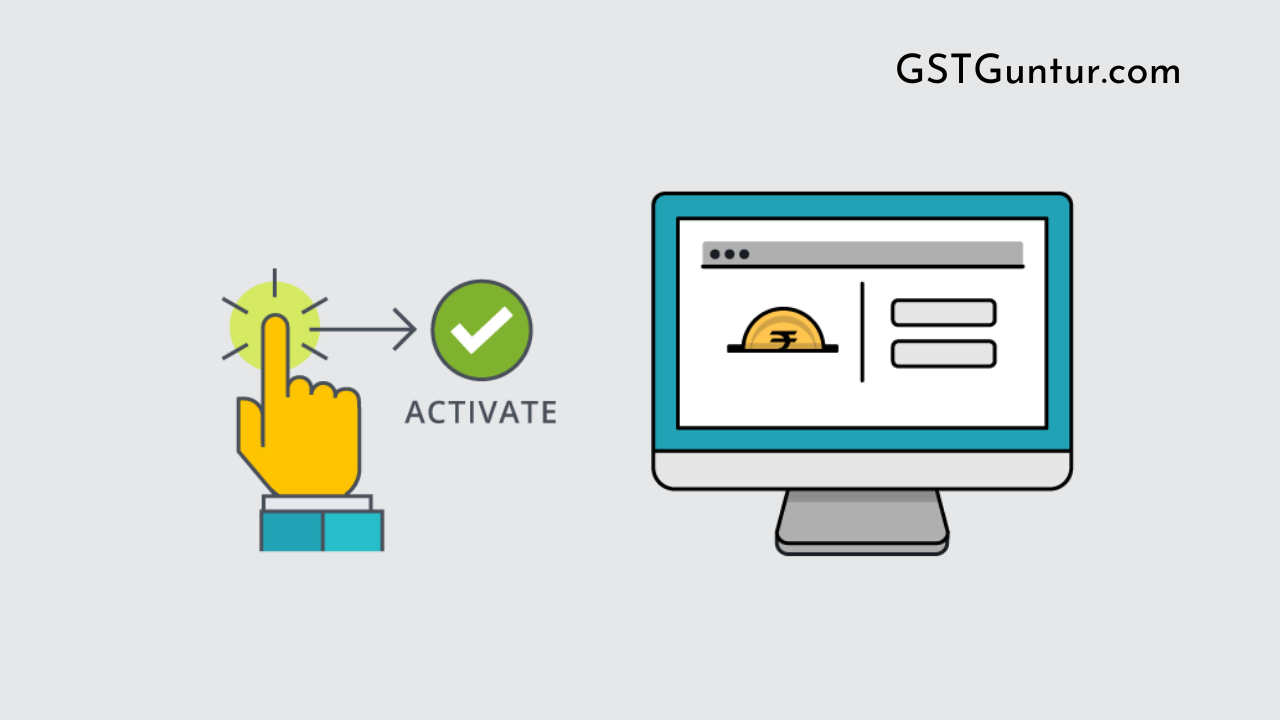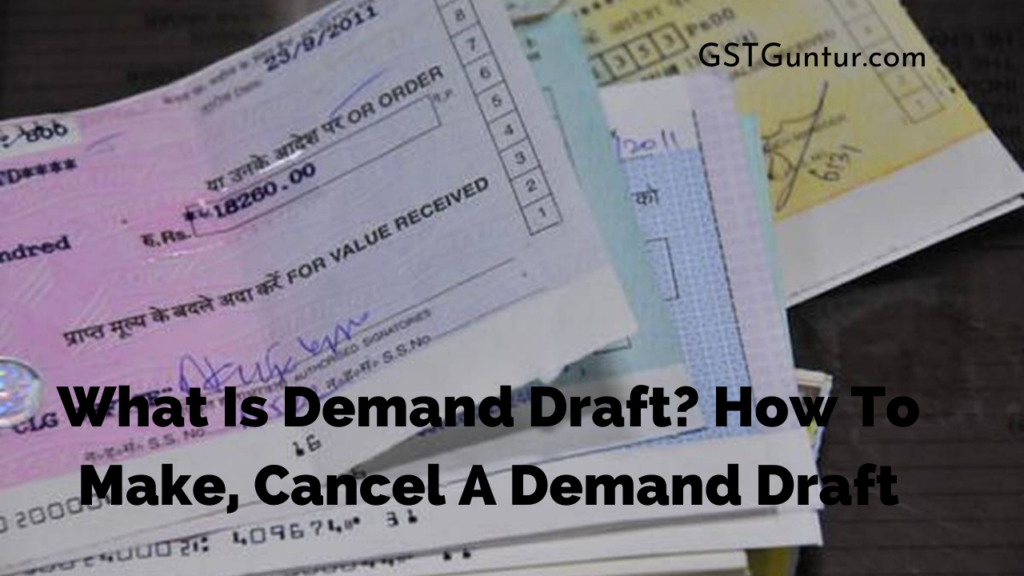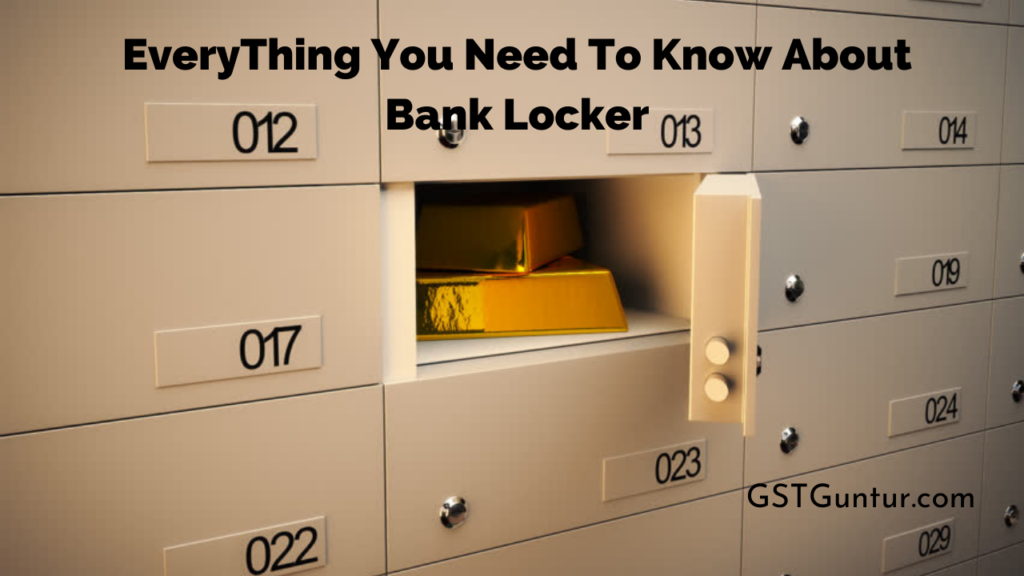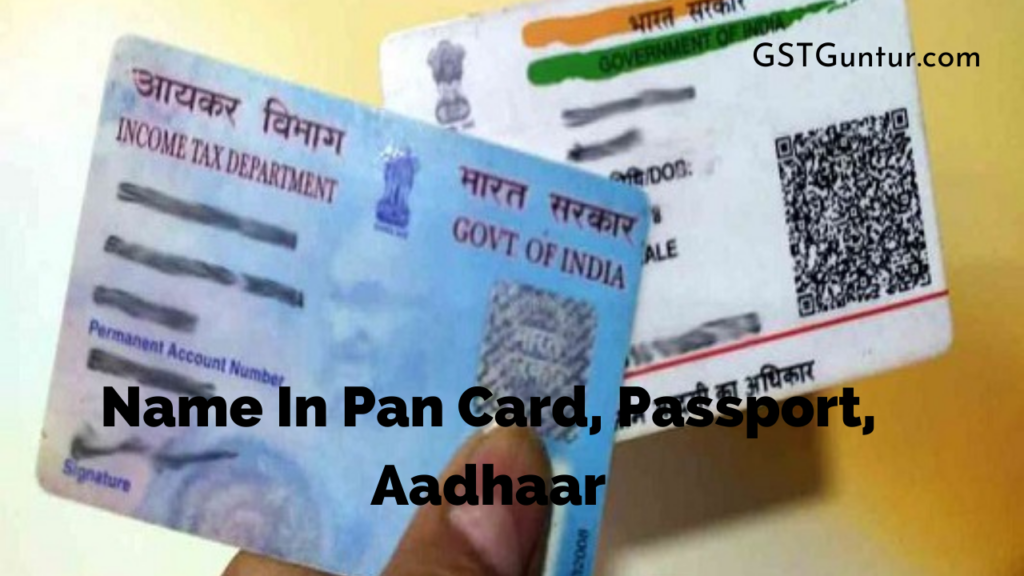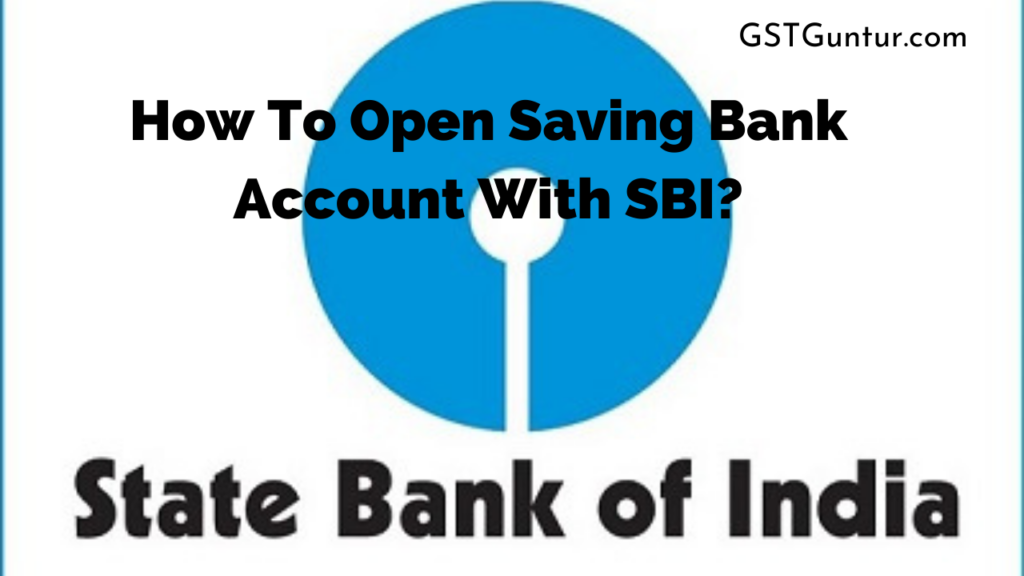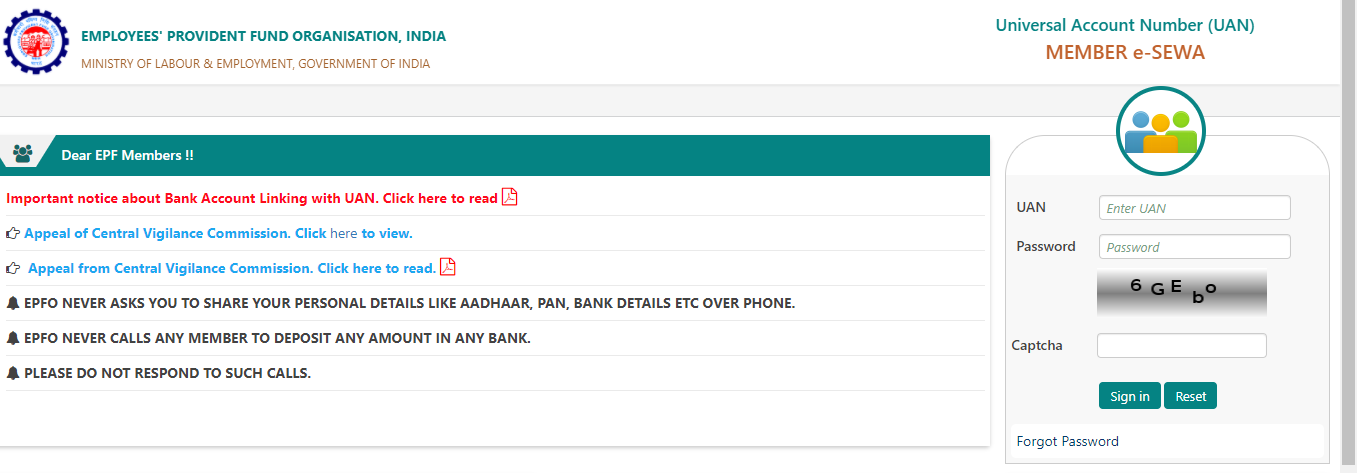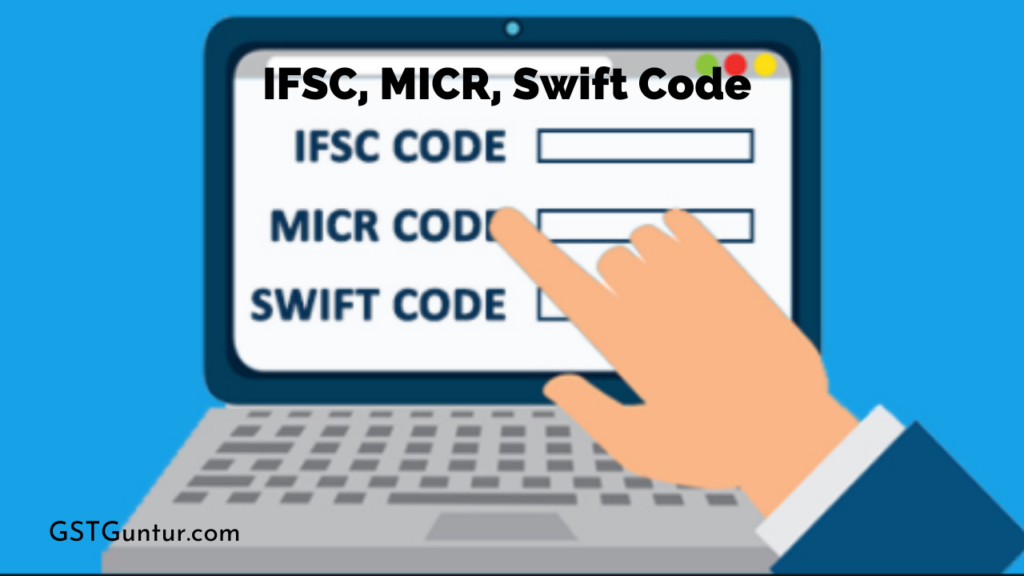What is a Bank Locker?: Customers are given access to a bank locker to secure valued items such as gold jewelry, jewels, and other essential documents and certificates such as a will or property documents at the Bank. The bank lockers are safe and trustworthy for the items which are dear to you.
Bank lockers are often stored in an ample space at the Bank, guarded with solid steel doors.
This service is not free of cost and provided in return for a nominal charge. The rent of each locker differs based on size. For instance, in SBI, it ranges from Rs.1500 per year (small locker rural branch) to Rs 8000 annually (extra-large locker in urban unit).
Lockers are not available at every branch of a bank. It is, therefore, best to opt for a bank with a locker near your house.
RBI Rules and Regulations
- A bank has a provision that entitles it to request a locker hirer an FD equal to three years’ rent plus a sum for breaking the locker as a last resort due to inevitable circumstances (the interest on the FD pays the rent).
- A bank cannot request an FD from current lock hirers. Furthermore, no bank links locker recruiting to FD or spending in a sum more significant than a fair amount.
- Banks should continue to include locker facilities while keeping economic viability under check and considerations. Customers who apply to rent a locker at a bank should be placed on a waiting list. Per applicant will be allocated a waitlist number.
- The hirer must mandatorily give proof in the form of a hard copy of the agreement contract between the Bank and the hirer.
- After determining the risk connected with the hirer, banks essentially conduct KYC checks. The Bank must follow this for new and as well as pre-existing clients.
- In case the client has not been operating the locker in recent times, the risk is considered medium for a period of more than three years and higher in the case of more than one year.
In this scenario, the Bank must contact the locker hirer to either operate the locker or surrender it, despite the fact that the locker hirer has effectively paid the rent.
The Bank should request a written response to know the explanations behind the locker not being managed.
If there is no response and the locker is not being used, the Bank can open the vault persuasively in the wake of giving formal notification to the hirer. If the locker is to be opened forcefully, a point-by-point protocol must be followed by the bank authorities.
- The Bank should devise a plan for coercively opening the locker.
- Keys should be stamped with the bank/branch id code to help to recognize the proprietor of keys.
- The Bank will take every necessary safety precaution to guard the bank locker and ensure that top security norms are adopted.
Laws and Criteria as Prescribed for Nominations
Banks are required to develop policies based on the accompanying laws:
- Banking Nomination guidelines as of 1985
- Section 45 ZC to 45 ZF of the banking regulation act of 1949
The guidelines under the Banking Nomination rules 1985 are:
- A single person may only be chosen.
- During the time that the locker is under hire, nominations may be withdrawn or renewed.
- In case of choosing a minor, another guarantee needs to be affirmed to help a minor.
- There are various ways and different categories of nominations.
- SL1
- SL1A
- SL2
- SL3
- SL3A
The guidelines under Section 45ZE of the banking regulation act 1949 are:
- In the event of the locker hirer’s demise, a person may be named by the locker hirer to unlock the locker and retrieve the contents and the documents.
- When the vault is hired jointly and can only be run together if one of the locker hirers dies, the candidate and the remaining joint hirer can reach and delete the locker’s contents.
- Prior to actually withdrawing the belongings, the claimant or the nominee and the remaining locker hirer must organize and confirm a catalogue of the locker content material.
- The Bank bears no accountability following the candidate’s withdrawal of locker individual components.

Section 45 ZF of Banking Regulation Act Guidelines
Except for a competent jurisdiction judge, no one other than the hirer or hirer can see a bank for claiming locker contents. In that case, the Bank should take such a pronouncement into consideration.
Safe deposit lockers must meet the following requirements:
The locker facility is also called ‘safe custody’, and to hire this locker with a bank in India, a client must follow these guidelines-
- The applicant has to be greater than equal to 18 years of age.
- Certain banks demand the individual to have an account with them in order to utilize this assistance.
- The lockers available come in various sizes, and a customer can determine the extent of his locker as per their needs.
- In the beginning, the customer may likewise be required to deposit some money as security. This may incorporate rent for a locker for a set period (say, three years) and an amount for crises where the Bank has to break open the locker (say, if the customer has lost the key).
- Nomination and/or shared possession of a locker has become an obligatory need while employing a locker. The Bank indicates the conditions where the client recruiting the storage will be given a choice to name a replacement for their locker.
- On the off chance that there are joint holders, each joint holder must expressly state the type of ownership arrangement they are entering into (like either survivor, former or survivor, etc.).
- If a security deposit is placed while the locker is employed, the client will receive a confirmation.
- The Bank also includes a guide in which the Bank expresses the subtleties of the vault apportioned to clients. This paper is known as the “memorandum of letting”. It is delivered to the customer when the locker is employed.
Who Will Take Accountability for Bank Locker Theft?
As per the rules distributed by RBI, banks are not at risk for the resources in the Bank if the vault is undermined because of civil war, theft, or other unforeseen situations.
Customers are responsible for storing valuables in the locker in their danger.
Locker Key Details
Regardless of whether the locker is taken in joint name, banks give simply one key to the locker hirer. The key must be kept very cautiously by the hirer because it is an essential part of the locker contract.
If the key is missing, the bank will break the locker, and the customer will have to pay for the entire process. To retrieve the missing key, several legal procedures must be followed.
A new lock is placed on the locker, and consumers will be given a new key.
There are some Do’s and Don’ts for Bank Lockers that a Client should be aware of
- A locker should not be located in a deserted region, neither should it be placed in a region with a dense population, such as a bus stop, taxi stand, train station, and so on. You don’t want to transport your valuable items over town, and they should be conveniently near to your home.
- You likewise need to keep a documented list of your contents in the locker. If there should arise an occurrence of robbery, at any rate, you will realize what was taken.
- In the event that you are holding certificates and other important documents in the locker, it is astute to get them laminated for better protection.
- It also makes perfect sense to run lockers in a joint-holding or nomination-based format. This guarantees that one can in any case run the locker and hand it over to the legitimate beneficiaries if there should arise an occurrence of death of the individual.
Valid Grounds That Might Be Considered for Locker Breaking
On the occasion of any of the subsequent emergencies, the locker can be broken open
At the behest of the hirer, if the key is lost
If the client misplaces the key, it is advised to notify the bank authorities right away without any delay. Typically, a well-documented application siting valid reason is addressed to the Branch Manager.
The client in question will be held liable for all the expenses of unlocking the locker, replacing the lost key, and getting the lock fixed. Some banks include the fee in the initial security deposit, while other banks charge it separately.
Failing to pay locker rent charge
Non-compliance with rental arrangement contract terms at the Bank’s disposal, including not using a locker for like a year.
Size of the Locker Opted for
Safe Deposit Lockers are accessible in various sizes. In light of the requirements, a client can pick the size of the locker needed.
- Locker dimensions are quite often categorized as Small, Medium, and Large in simpler terms. Strictly speaking, the sizes of the lockers are defined by the letters A and B. Most banks have several locker sizes, including A1, A2, and so forth.
- The locker sizes commence with small ones, frequently known as A-class, with dimensions in inches generally range from 4.5 X 5.875 X 20.75.
- As the size increases chronologically, the L/K class is typically the biggest.
- The measurements of an L-size locker are roughly 15.5 X 19.9375 X 20.875.
- The rent increases in sync with the size of the locker, i.e., the rent is directionally proportional to the size of the vault for which the rent is being paid.
What is the Difference Between Leasing a Locker and Surrendering a Locker?
- Locker services in a bank are usually reserved for a period of one or three years. This renting is referred to as the leasing of a locker.
- As the locker’s lease period comes to an end, the locker’s hirer may either get the lease renewed for a further period of one / three years or may surrender/vacate the locker. The situation in which the bank authorities vacate the vault by the hirer before the lease period’s expiry is termed as the Surrendering of the Locker.
Points to Bear In Mind Before Surrendering Over The Locker
The hirer(s) can forfeit the locker at any point whenever during the contract term.
They will just have to forfeit it if they decide to transfer their locker from one branch to another or swap banks in which they avail the locker services.
The hirers may likewise close it on the off chance that they need to consolidate their lockers. Indeed, even the bank can demand to forgive up by offering a prior formal notification.
- Clearing the contents of the locker: The hirer should guarantee that the components of the locker are taken out prior to starting the procedures for surrendering the locker.
- The surrender program is a well-documented application: The hirer should send a letter to the division manager where the locker is stored. The concerned client must refer to the storage number and individual subtleties, like name, address and telephone number. The letter must be signed by the locker possessor, i.e., the client.
- Returning the key of the recently had locker: The hirer is essentially and solely responsible for returning the locker key to the branch manager. Under the circumstances that the key has been lost, the bank engages in a protocol for issuing duplicate keys and any penalties before proceeding with the process of shutting the locker services.
- Acknowledgment note subsequent to surrendering the locker: Following the finishing of every one of the conventions, the branch manager of the bank will give an acknowledgment, acknowledging that the locker has been effectively surrendered. Further considerations which should be dealt with:
- Both holders must sign applications for the closing of mutually-owned lockers.
- At the point when the locker is returned at the request of the hirer, the charges for the unutilized period, assuming any, are discounted for the excess complete quarters as it were.

Making Use of a Bank’s Locker Facilities
Caretakers are officers assigned from each division to control Safe Deposit Lockers. To unlock the locker, a key pair is necessary, one which is possessed by the bank (commonly the Custodian) and the other with the client.
To unlock the locker, the client must use all keys simultaneously.
A few banks, as IDBI, have now begun offering 24×7 locker access benefits at select branches; however, this service is not free.
- Lockers should be used at times defined at the branches. One needs to visit the bank with a locker key during the official opening hours of the bank.
- The applicant for the locker has to meet the Custodian and carry out the required paperwork and documentation.
- In case when there is no locker vacant at the given time, the applicant is expected to wait for their number in the waiting list to arrive.
- The locker holder, along with the Custodian, visits the deposit vault. After the Custodian inserts the bank key, the consumer inserts their key, and the locker unlocks after a perfect match without any discrepancy. The Custodian exits the deposit area leaving the customer with utmost secrecy. The customer then carries out the required work in the locker. After completion of the work, the customer left the place.
- It is advised to check for any extra fees which the bank can levy. Some banks can charge a fee if the client uses the locker more than a certain amount of times per year; for example, SBI charges a fee if the locker is used more than 12 times a year.
- The customer must unlock the lockers at least once half-yearly. If the locker is not used for more than a year, the user may be given a note for doing so. If the customer does not respond, the bank has the legal right to bust open the locker in police presence. In case the client fails to pay the locker rent charge, in the same way, the bank has all the right to break open the locker.
The client must use the locker with caution and discretion, and before shutting it, it is always a good practice to take a look around to ensure that nothing significant has been left out.
To carry out the checking, a client should carry along with them a list containing all the objects kept by them in the locker.
Often, no one should be allowed inside the locker when the client is working with it since there are many valuable personal belongings of the client in question.
In reality, going to the locker with near family members such as a son, daughter, partner, or wife is usually a smart idea, as long as the vault also contains their name.
Rent Charges for Renting a Locker in the Bank
- Like paying the rent charges while residing in a rented house, a hirer of the locker services must pay the amount.
- Locker fees differ between banks and divisions based on demographics (metropolis or semi-urban environment, busy business area, etc.). The lending rates of public and private sector banks vary significantly.
- For example, the rental costs for medium-sized storage (F class) in a private bank may go up to Rs 20,000 every year, whereas the same can be availed in a government bank at almost one-sixth the rate.
- The rate likewise relies upon the kind of record you have with the Bank. For example, HDFC Bank will forgo half of the lease on the off chance that you are an exemplary client; that is, with an average quarterly balance of Rs 1 lakh,
- The cheapest lockers are the smaller ones, also identified as A-class. The size expansions in sequential requests, so the L/K class are usually the biggest and the costliest storage spaces.
- It is necessary and read the fine print to prevent expensive errors. For example, numerous banks require a base record equilibrium to be kept up, which can be a costly recommendation on the off chance that you select a bank where the breaking point is set at Rs 25,000-50,000 a quarter.
- It is likewise pivotal to realize how your Bank characterizes a year while ascertaining the rate of locker rentals. Most banks consider the day of the contract to be the baseline, and the corresponding annual rent is due on that day. Be that as it may, a few banks have a predefined timetable as per the scheduled year or financial year. It is vital to realize the example in order to pay the rent on time.


